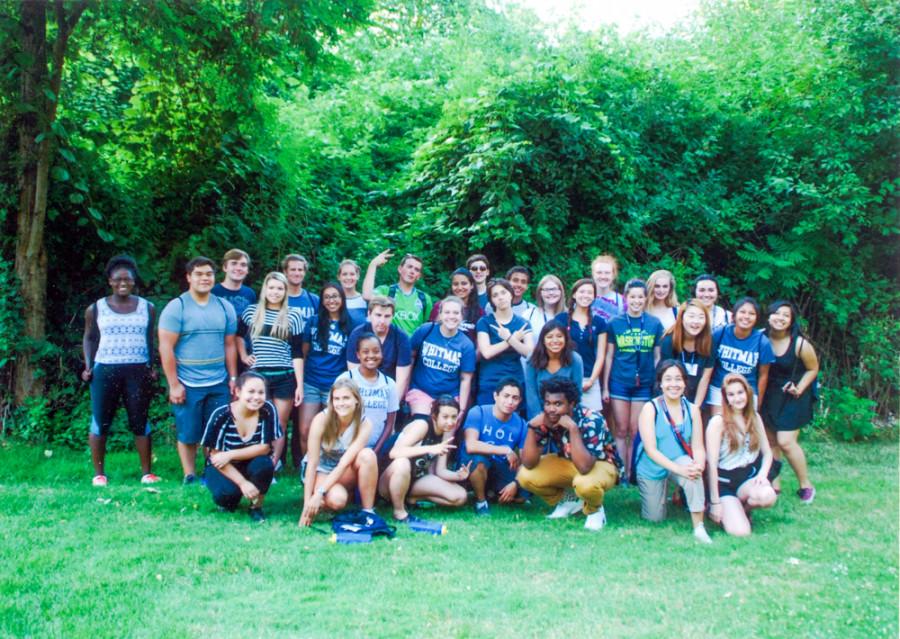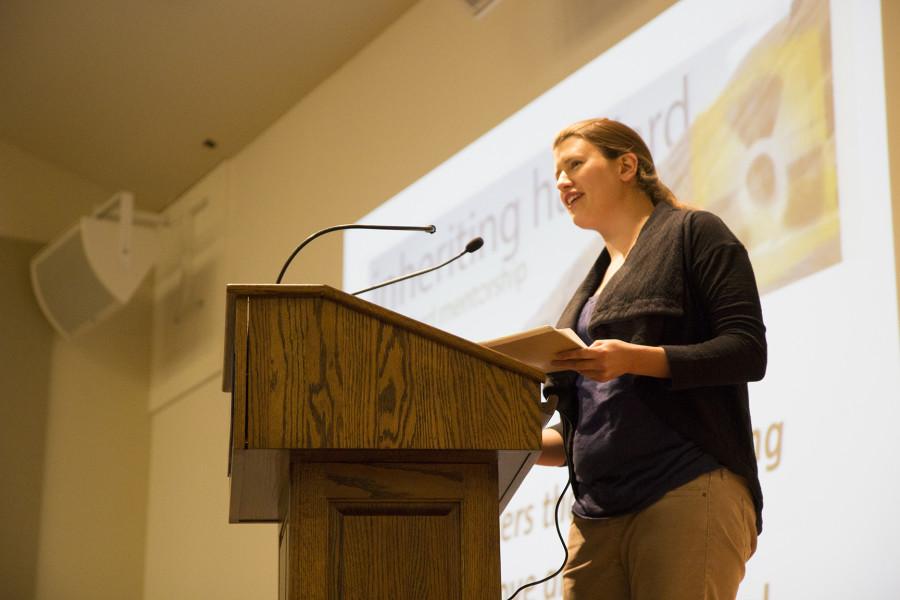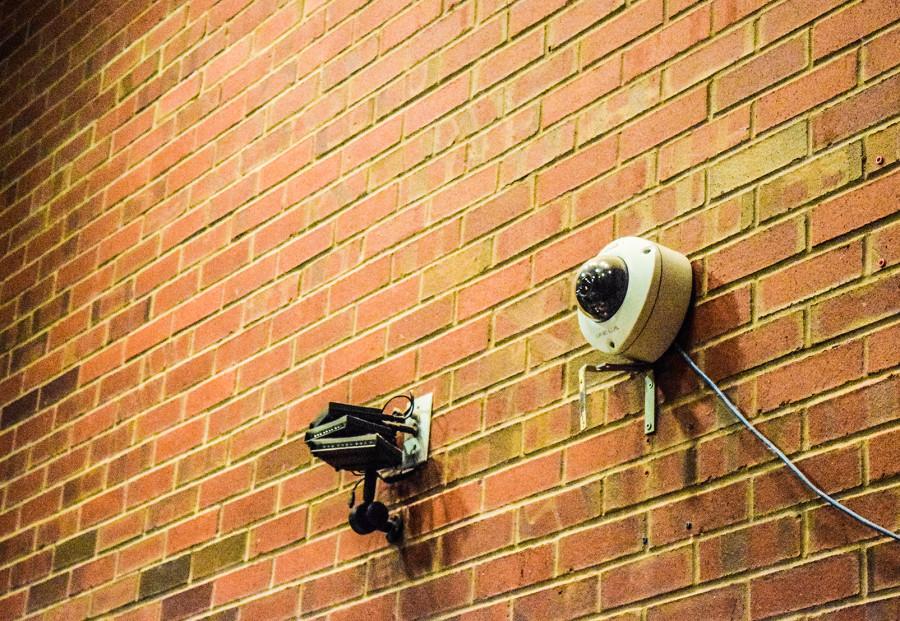Over the past year, the college administration and faculty have been talking more about the difficulties of handling faculty diversity on campus. Although the college makes efforts to recruit a racially diverse faculty, and has sought out larger numbers of female professors, in part to reflect the growing female proportion of the student body, professors in both of these groups tend to leave Whitman in greater numbers than their white and male counterparts, especially prior to receiving tenure.
While most faculty who leave the college have some type of personal reason for doing so, the aggregate numbers have caused concern within the administration. Over the summer, President Bridges held a dinner for a group of faculty and administrators to discuss concerns over the retention rate. One result of this meeting was the formation of a Working Group on Faculty Retention at Whitman. The group, which has met twice this semester, is planning to bring a consultant to campus in the spring to further investigate the issue.
“We as a working group are hoping to get a stronger sense of not only why some people aren’t staying at Whitman … but looking deeper and asking, ‘What are the underlying causes of people leaving?'” said Associate Professor of Religion Melissa Wilcox, the spokesperson for the working group.
What diversity means
“Diversity” is undoubtedly a buzzword on the Whitman campus, though it’s perhaps most commonly discussed in relation to the student body, rather than the faculty. Students have debated the meaning of the word itself, as well as its importance, and the Office of Admission tends to take a broad view which includes demographic traits (gender, race and socioeconomic status, for instance), as well as life experiences.
For faculty, however, the discussion is somewhat different. Because of federal laws related to employment discrimination, most categories which are viewed as “diverse” can’t legally be asked about on a job application. This means that traits like sexuality and religion tend to remain more invisible, while gender and race can be more specifically targeted because of their visibility.
As with diversity in the student body, diversity in faculty is promoted as a way to bring a variety of perspectives to the college. David Schmitz, chair of the faculty and Robert Allen Skotheim chair of history, said that when he became the faculty chair last year, he asked a variety of faculty to share their concerns with him. Promoting diversity within the faculty was a top concern.
“With the economic crisis in 2008 and the necessity of responding to that, certain initiatives in terms of diversity broadly defined lost their momentum,” said Schmitz. “I think there’s now momentum again.”
Still, as with discussions about the student body, what is meant by the word “diversity” isn’t always clear. For instance, every applicant for a faculty position at the college is required to address in their letter how they will contribute to diversity on campus. Prior to the formation of the working group, Wilcox said that practices like this demonstrate a view of diversity which is so broad that it renders the word without much meaning.
“What we’re not paying attention to is what we mean when we say diversity. Who are we talking about? Are we trying to get a bunch of white men who’ve been to Africa, to put it crudely, or are we really trying to really change the face and the shape of Whitman?” she said.
Wilcox hopes that the working group can be a step in clarifying this focus, and help identify ways to better support underrepresented groups on campus.
“If we’re really trying to change the face and the shape of Whitman, we need to be paying attention to not only what it means to recruit people, but what it takes to bring them here and what it takes to keep them, whether they’re faculty, students or staff,” she said.
Much of the support for diversity initiatives on the faculty reflects the feeling that the faculty should reflect the composition of the student body. The number of international students and students of color at Whitman has been rising in recent years, and the college is currently approximately 60 percent female. Having faculty who come from similar backgrounds can help support these students by providing them with mentors.
“If you’re going to have women students and students of color and you want them to be confident in their abilities, it helps for them to see that there are other thriving successful members of the faculty [who are part of these groups],” said Associate Professor of Politics Shampa Biswas.
Biswas is one of a number of professors who have advocated for increased consideration of gender issues on the Whitman campus, such as the creation of a maternity leave policy, which happened for the first time last fall. She said that equity issues also factor into the discussion on diversity.
“Higher education, in a sense, should reflect the society in which it is located,” said Biswas. When this isn’t the case, “it tells you something about the exclusionary practices at work.”

Invisible barriers
Exclusionary practices aren’t always visible, and aren’t only present in the hiring and selection of faculty. Simply recruiting a diverse group of faculty doesn’t mean they’ll stay on campus. Competing demands for time, including a greater demand for mentoring and service work, as well as overt and implicit discrimination, play a role in how welcome underrepresented groups of faculty feel on campus.
“We have a sense that faculty of color and women faculty members end up doing a lot more of the invisible work of the institution,” said Biswas.
Among the largest concerns mentioned by female faculty and faculty of color is that the time and effort they put into mentoring students outside of academics may go unrecognized.
“As the demographic composition of the student body has changed, ‘diversity students’ who face sexual harassment or racial discrimination or are just looking for somebody to understand the obstacles they face as a first generation college student or an international student at a place like Whitman often look to these ‘diversity faculty’ for mentorship and support,” said Biswas, echoing a concern that has been raised by many female faculty, faculty of color and LGBTQ faculty.
Mentoring work like this takes time away from teaching and scholarship, both of which are valued more highly when professors are being considered for raises and tenure. While it’s difficult to measure, many faculty members from underrepresented faculty groups feel that they are required to work extra hours in order to teach well and produce scholarship at a high level, because of the mentoring demands made on their time.
In addition to mentoring, societal norms about what a professor “should” look like can make work challenging for professors who fall outside of this model.
“One consequence of the relatively narrower demographic composition of the faculty is that there are certain prejudices out there about [what constitutes] a qualified and capable professor, which sometimes means that highly capable diversity faculty will have their credentials and abilities questioned, sometimes by colleagues and sometimes by students, which can affect morale and performance,” said Biswas.
Prejudices like these can lead to lower scores on class evaluations, which in turn impact pay and tenure decisions as well.
According to data that Whitman reports to the Chronicle of Higher Education, there is a pay gap between male and female faculty. On average, men at all levels of professorship––full, assistant, associate––earn about $12,000 more per year than their female colleagues. In response to faculty concerns, Whitman’s Office of Institutional Research compiled a report on differences in faculty salary based on gender over the summer of 2012.
The report found that the gap between salaries was explainable due to differences in rank, since male professors have, on average, been at the college longer and generally have a higher rank. For instance, 34 percent of male faculty are full professors, compared to 16 percent of female faculty.
The report concluded that the differences in average salary between female and male professors of the same rank were not statistically significant, meaning that the gap could not be definitively attributed to gender. Still, these conclusions left a number of questions unresolved.
“[The report] didn’t put those data in the context of much greater societal problems of gender pay inequity,” said Paul Apostolidis, professor of politics and Paul Chair Political Science. “These two statistical analyses are helpful, but I don’t think we should conclude on the basis of them that there is no problem.”
Potential issues with interpretation of the report include the small population being examined and its focus on only one academic year’s worth of data. One factor which determines statistical significance is the sample size in question, and because Whitman’s faculty is such a small body, it would take an extremely large gap to find statistical significance in the pay gap.
In addition, the report does not mean that the differences in salary are not explained by gender––it simply means that it can’t be proved that they are explained by gender. When the report was released earlier this fall, Wilcox pointed out that there is a difference between disproving something and failing to prove it.
“Having a finding that does not have statistical significance doesn’t disprove anything,” said Wilcox.
Ultimately, faculty feel that more consistent monitoring and a larger set of data is needed to fully examine the issue of pay. Schmitz said that even without statistically significant findings, the issue deserves greater scrutiny.
“Even if [the findings are not significant], I don’t think that says to us, ‘We’re fine.’ That’s only one point over time. What are the trends?” said Schmitz.
Whitman efforts
Since the 1980s, the composition of Whitman’s faculty has become increasingly female, some of which can be attributed to efforts by the college, and some of which is due to the fact that more women are entering academia in general.
“There’s been a change from an institution that was mostly white, mostly male faculty to an institution that will be, if current trends continue, a majority of women faculty very soon,” said Schmitz. While the number of faculty of color is increasing as well, those numbers are still relatively small.
“We haven’t made as much progress there,” said Schmitz.
Still, Whitman’s retention data suggests that the college would benefit from greater institutional support for underrepresented faculty groups. President Bridges addressed the importance of better understanding institutional barriers that female faculty and faculty of color face, and the Office of the Provost is concerned about the issue as well.
“Over the course of the past two years, we have hired 22 new faculty members into tenure-track positions, and, this year, we hope to hire another 11. We are very excited by these new additions to our faculty. But we are also fully aware of the responsibility we have to support these professors and, indeed, all faculty members at Whitman in their capacities as teachers and scholars,” said Provost and Dean of Faculty Timothy Kaufman-Osborn.
In addition to organizing within the administration and faculty to investigate issues with underrepresented faculty, Whitman is planning to hire an outside consultant to look into the matter. The working group on retention will be interviewing two candidates next week, and plans to select one to carry out the project next semester.
“These [consultants] are people who’ve looked at these issues in other places and bring a different set of eyes to something we see as normal,” said Schmitz. “A consultant can help you frame and think through the issue.”
Biswas said that she was optimistic about the consultant, since it shows the college is willing to invest resources in supporting diverse faculty.
“I feel like I’ve been raising the question at intervals and nothing’s really happened. It seems like there’s headway. There’s at least the appearance of it being taken more seriously recently,” she said.
Still, Biswas hopes that the college will follow through on recommendations.
“Part of the reason [the administration] formed the committee and are bringing in an external consultant is because they’re serious, but I don’t know what that seriousness translates to. Does that mean the administration is going to make a commitment to both increasing and supporting diverse faculty? What does that commitment look like?” she said. “They know that there’s a problem, but I think it remains to be seen what that seriousness translates to in terms of institutional resources.”




















AdjunctAdvocate • Dec 10, 2012 at 3:29 pm
Whitman College might be one of those dozens of colleges really isolated from a variety of opportunities for growth outside the college community. That’s one issue in and around diverse communities in the college: what does the community outside the campus have to offer?
But diversity of faculty hits the big mother ship, in Seattle. UW is having the diversity debate big time — just at the recent Faculty Senate on Nov. 29. What is happening here is that minority groups in the community just do not get considered when hiring takes place. But there are great communities in Seattle (still a very white city, the whitest city in US for its size) where proactive people discuss their various needs and hopes and accomplishments. In Walla Walla, I doubt the city has anything like that, yet another isolating effect of a small college in a small town.
Here is an important article that ties into adjunct faculty across the nation. Many adjunct faculty are coming from the ranks of minority groups and from the ranks of the female gender.
All of these issues are coming to roost, unfortunately. The result is a hollowing out of education through years of neglect by highly paid administrators and asleep at the wheel legislators and business leaders.
http://diverseeducation.com/article/12641/
“Institutions have grown increasingly dependent on adjunct faculty over the last few decades, and scholars of color are ever present among this group.”
Students must unite. You must put fire to the feet of regents, administrators, business leaders. Really. As a college rag, look into what the Arizona Students Association is going through because they supported Prop. 204 (it did not pass) in Arizona — a permanent 1 percent sales tax to fund public education:
http://azstudents.org/
“The Arizona Board of Regents recently voted to suspend the $2 that funds the Arizona Students’ Association for the spring semester. Regents have said in public that ASA’s support from Prop. 204 was a major reason why they took action on the fee. A final decision has been postponed until February.
If the Board of Regents can retaliate against students for supporting an initiative that sought to benefit them directly, they can punish any student group for anything that they disagree with. It’s a slippery slope – it may set a precedent and other student organizations could be their next target.”
Talk about students in action being penalized for that participatory democratic action!
Now how does this tie into diversity discussion and retention and recruitment? In Arizona, as in other states, the majority of new students coming to state schools is made up of minority classes of students, and poorer students in general. So, if the students active in government in Arizona are, say, led by Latino/a students, you think that Tea Party state and the regents aren’t into retaliation?
The story in Arizona is the story in Washington. While Whitman is private and non-profit, the 10 ICW schools, of which Whitman is one, depend on federal and state grants and loans for students who are also going to SU, PLU, GU, Whitworth, Whitman and the like with loads of private bank loans.
As higher education becomes more reachable by minorities, state governments are hiking up tuition and making it more difficult to afford school. Minorities and poor people are hit the hardest because of these classicist policies.
Keep up the good writing. Ughh below is really being unrealistic in his-her-their accusations of bad reporting.
Ughh. • Dec 6, 2012 at 2:39 pm
Important story, too bad the first half of the narrative reads like a stalling car engine that just can’t seem to start. Articles shouldn’t DEPEND on infographics to do their reporting work for them. They should be written well enough to stand alone if need be. This article fails to provide any concrete facts or figures until well into the second half, instead relying on anecdotal, unattributed observations.